River Bure
|
The longest and in places the busiest of the Norfolk Broads rivers. |
|
An Introduction to the River Bure on the Norfolk Broads
|

The River Bure is the longest, and in places the busiest, of the Norfolk Broads Rivers. The Bure rises near Aylsham which was the original head of navigation. Nowadays, the head of navigation is 10 miles downstream at Coltishall Bridge. After Aylsham Lock and Burgh Bridge, the River Bure passes through Buxton Lamas, Coltishall, Belaugh, Wroxham, Horning, past St. Benets Abbey, Acle, Stokesby, along the northern border of the Halvergate Marshes, through Runham and Great Yarmouth where it meets Breydon Water and flows into the sea at Gorleston. |
River Bure Guided Picture Cruise
|
Our tour of the River Bure starts at Buxton Mill, near Coltishall.
The mill was built in 1754 by William Pepper, a merchant living locally. The building was constructed of white painted brick and weatherboard with a pantile roof and has been a prominent landmark in the village for many years.
It closed as a working mill in 1970 and is now available as a holiday home. A footpath leads along the bank of the River Bure towards Coltishall and makes a lovely walk. |
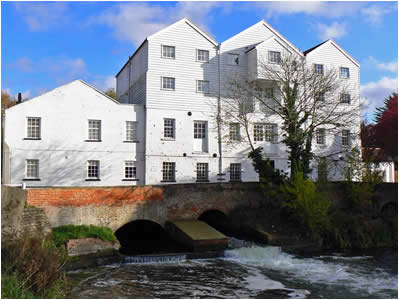
Buxton Mill on the River Bure |
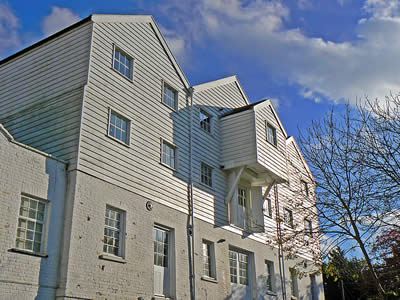
Buxton Mill |
Navigation of the River Bure starts at Coltishall. There is a lovely staithe, which is a great place to moor and enjoy a refreshment in the local pub by the staithe. |
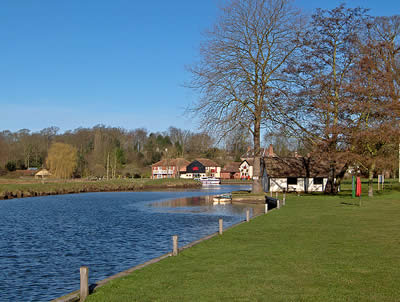
The staithe at Coltishall Common |
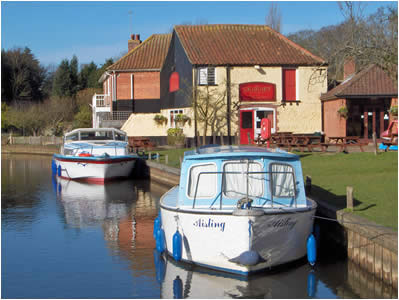
The Granary Restuarant, Coltishall |
A little further downstream we come to the quiet and
peaceful village of Belaugh. There is not a lot at Belaugh, but it has one claim to fame, for Norfolk anyway, it is built on a hillside! A climb to the top gives great views over the Bure Valley. |

The River Bure at Belaugh |
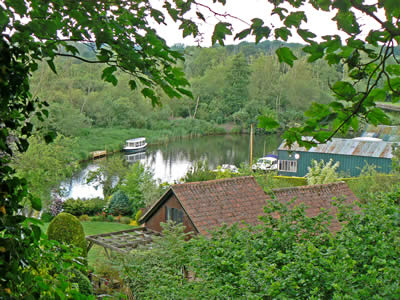
River Bure view from Belaugh Church |
The bridge at Wroxham is the start of one of the busiest stretches of water on the Norfolk Broads - the stretch of river between Wroxham and Horning. This is because Wroxham is the start of many boating holidays, organised boat trips and day-boat hire. Wroxham has plenty of facilities, including the famous Roys, the world's largest village store! |
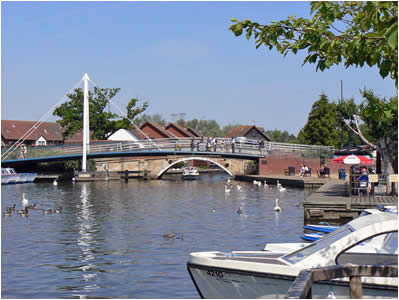
Wroxham bridge over the River Bure |
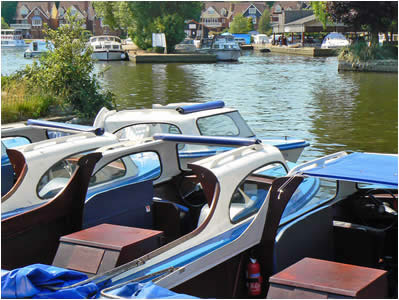
Self Drive Boat Hire from Wroxham |
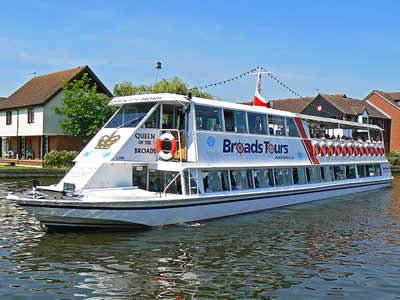
Broads Tours from Wroxham |
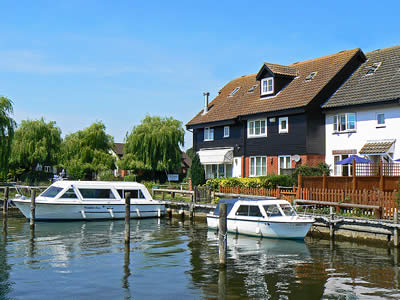
Riverside holiday cottages in Wroxham |
Salhouse Broad takes our vote for the most beautiful of the Norfolk Broads and yet it is one of the smallest. It is surrounded by ancient woodland and is the only Broad to feature a small sandy beach. It is ideal to anchor the boat and go for a walk, enjoy a picnic or let the kids splash around. |
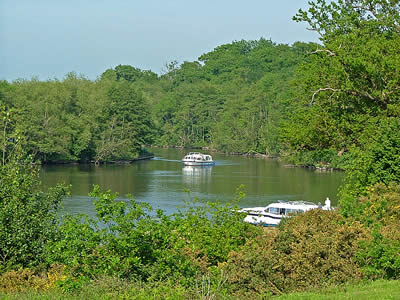
Salhouse Broad |
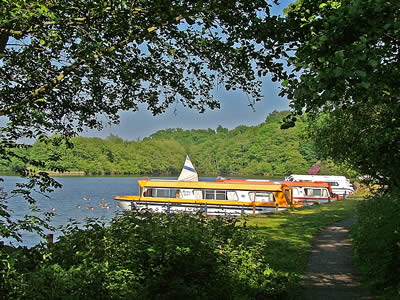
Boats mooring at Salhouse Broad |
Horning is one of the most picturesque villages on the Norfolk Broads, with its thatched cottages, riverside inns and lovely river views.
The paddle steamer "Southern Comfort" sails from here and Horning is one of the few places you still hire yachts. |
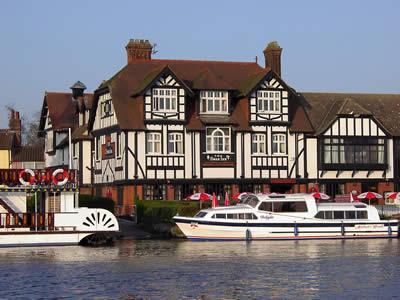
The Swan Inn at Horning on the River Bure |
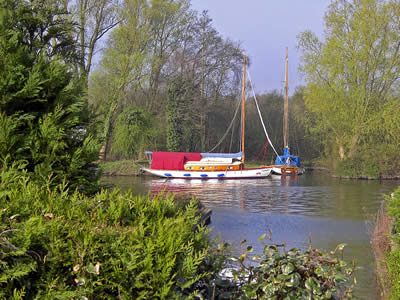
Views of the River Bure from Horning Lower Street |
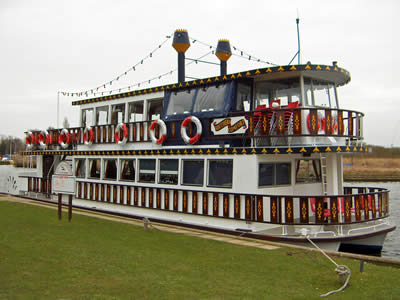
Boat trips on the River Bure |
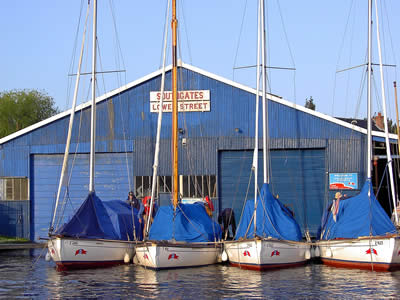
Sailing yachts for hire on the River Bure |
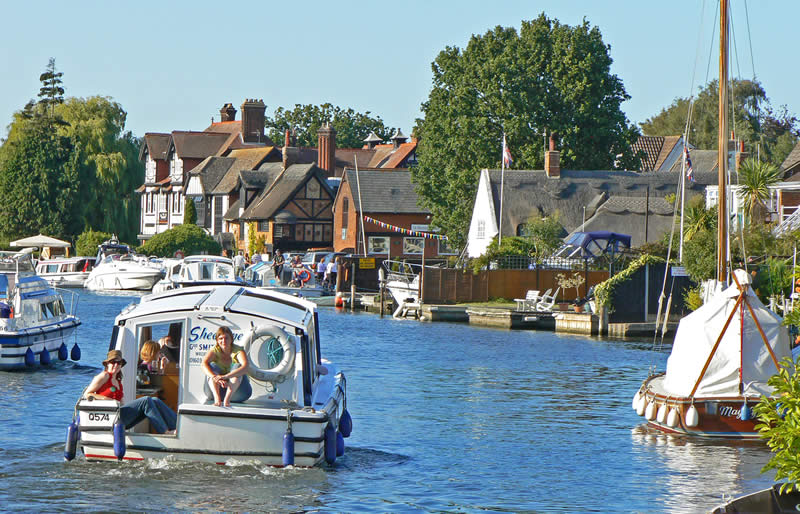
Riverside properties backing onto the river Bure at Horning |
At the other end of Horning is Horning Ferry, where you can still get a foot ferry across the river to Woodbastwick.
There is
a large marina, small leisure centre and holiday cottages at Horning Ferry. |
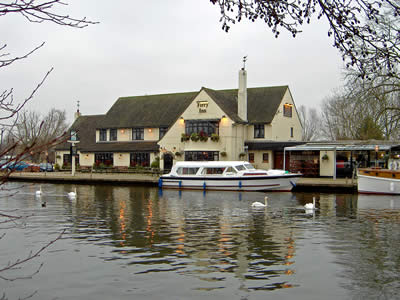
Horning Ferry on the River Bure (currently closed) |
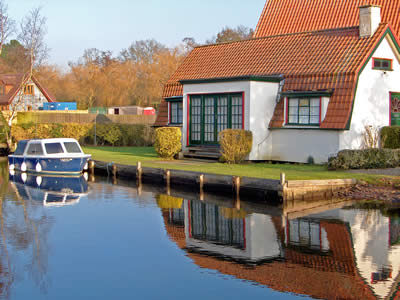
Holiday cottage on the River Bure |
Ranworth Broad is just off the River Bure and is split into two parts. The inner Broad is closed to boats and is a nature reserve. A thatched visitors centre shows the various wildlife that can be viewed from the upstairs viewing gallery overlooking the inner Broad. The remainder of the Broad is a boating paradise with all style, shape and size of boat, and their crew can often be found having a pint of local beer in the pub! Ranworth Broad is said to be haunted by a 12th century monk that is often seen rowing his boat out onto the Broad early in the morning mist. |
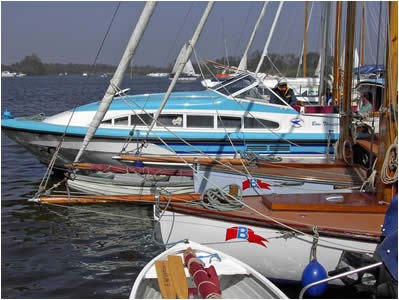
All style, shape and size of boat on Ranworth Broad |
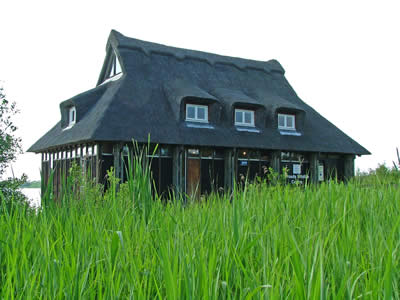
The thatched visitors centre at Ranworth Broad |
St. Benets Abbey is a well known land mark on the River Bure. The Abbey founded on land granted by King Canute in 1020, was at one time one of the wealthiest Benedictine houses in the country and was at the height of its prosperity in the middle ages. However it declined before the reformation. None of the ruins date from this early period as in the 18th century a brick windmill was built inside the ruins. The top of the mill is now missing due to the fact it was blown off in a gale in 1863.
Legend has it that the ghost of the monk who treacherously granted access to William the Conqueror can be seen hanging from the former bell tower on each night of the 25th May. |
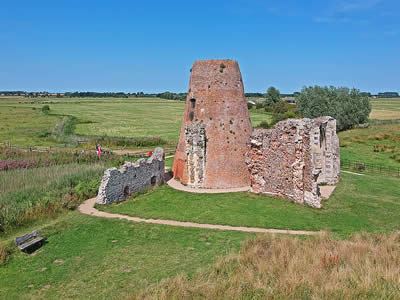
The ruins of St. Benets Abbey on the River Bure |
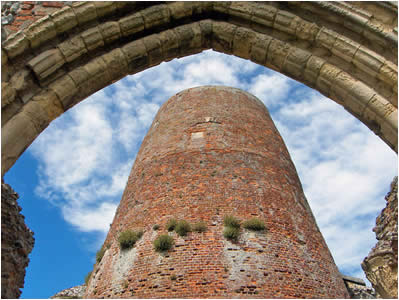
The arch and ruined windmill at St. Benets Abbey |
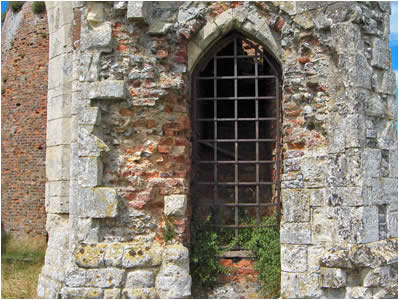
Detailed stonework of St Benets Abbey |
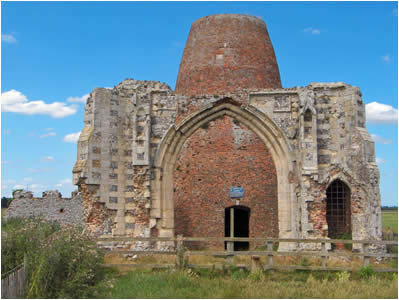
The ruined abbey of St Benets on the River Bure |
Fleet Dyke takes from the River Bure to South Walsham Broad, which is split into two parts. The Inner Broad is private and is closed to the public, but the main South Walsham Broad is a lovely peaceful place to visit and well worth the effort of diverting from the main river. Around the edge of the Broad are various properties and holiday lodges, and to be honest, they obstruct the view of the Broad from the public footpath, but you do get glimpses of the broad through their garden gates! The village of South Walsham itself is about a miles walk and contains a pub and a restaurant. |
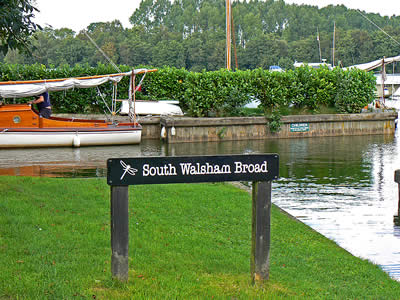
The staithe at South Walsham Broad |
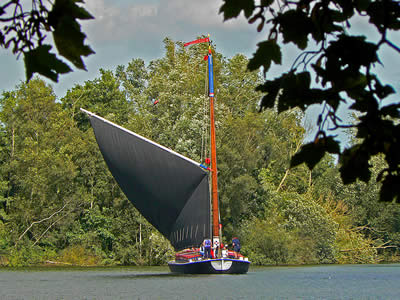
Glimpse of a wherry on South Walsham Broad |
|
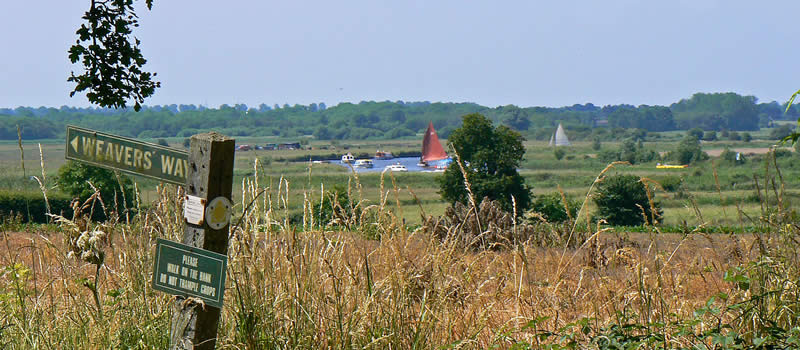
The Weavers Way footpath overlooking Thurne Mouth |
Upton Dyke leads from the River Bure to the small village of Upton. The dyke itself is a little narrow and there is a path leading along the dyke which is lined with private boat moorings. The village of Upton has a boatyard, a pub and a medieval church. |
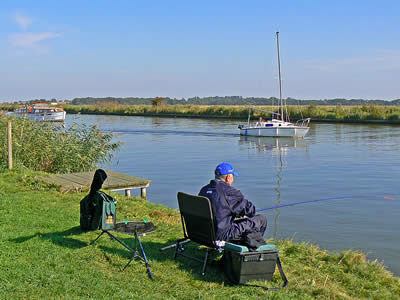
Fishing on the River Bure near Upton |
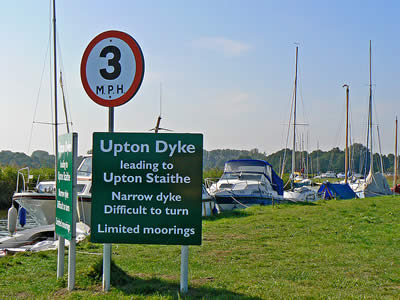
Upton Dyke leading to the village of Upton |
Cruising further down the River Bure towards Great Yarmouth, we come to another major landmark - Acle Bridge. Several bridges have stood on this site with the first reference to a river crossing back in 1101. Until its replacement in 1931, Acle bridge was a three arch stone bridge with two piers supported on oak piles driven into the river bed and built in the 1830s. The three narrow arches would have proved a barrier to any vessel other than keels and wherries. A single-span concrete bridge built in 1931 was subsequently replaced by the current bridge in 1997 due to the increase of road traffic volume and heavier loads carried, plus the bridge was showing signs of subsidence. Adjacent is a couple of boatyards hiring cruisers to visitors and " The Bridge" public house. Acle is an attractive market village and traditional character of the village has not been lost, with a market still held here (every Thursday am and a farmers market every 2nd Saturday in the month). |
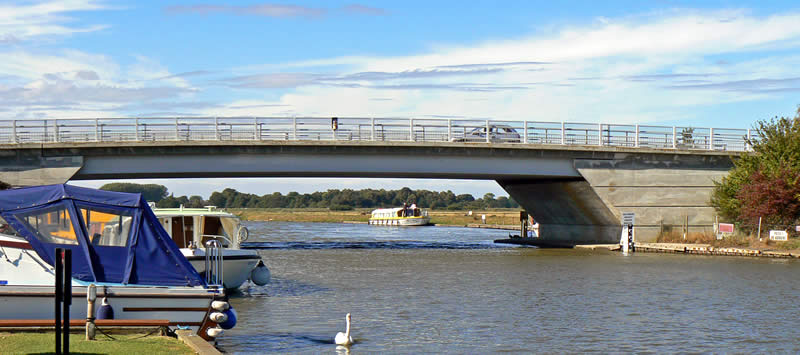
The modern Acle Bridge, built in 1997 |
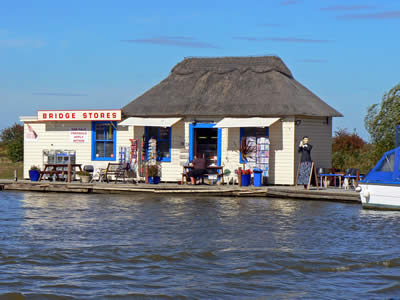
Acle Bridge Stores, adjacent to the bridge |
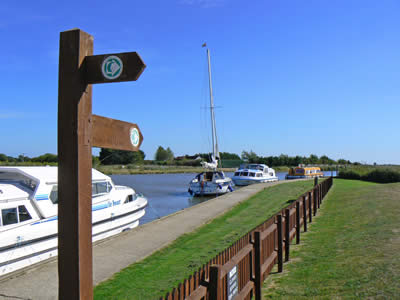
Weavers Way footpath along the River Bure near Acle Bridge |
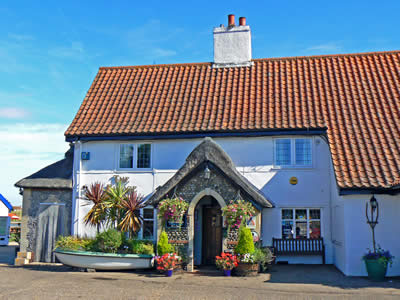
The Bridge pub at Acle |
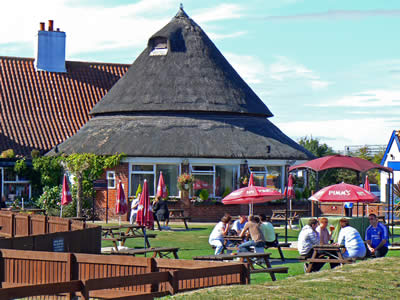
The pub garden overlooking the river |
The River Bure continues its journey through the Norfolk countryside, finally ending up at the Yacht Station at Great Yarmouth. This picturesque spot allows boats to wait for the right state of the tide to cross Breydon Water to access the southern rivers. Great Yarmouth is The king of East Anglian seaside resorts. Brash but loads of fun, with plenty of attractions to keep you entertained all day and night! |
|
River Bure Summary of What to SEE and DO
|
|
|
Our Verdict
|
You are almost certain to travel along the River Bure during your boating holiday, for example the stretch between Horning and Wroxham is the busiest on the Broads. The river Bure has a lot to offer though- make sure you get to see St Benets Abbey. |
|
|

|

